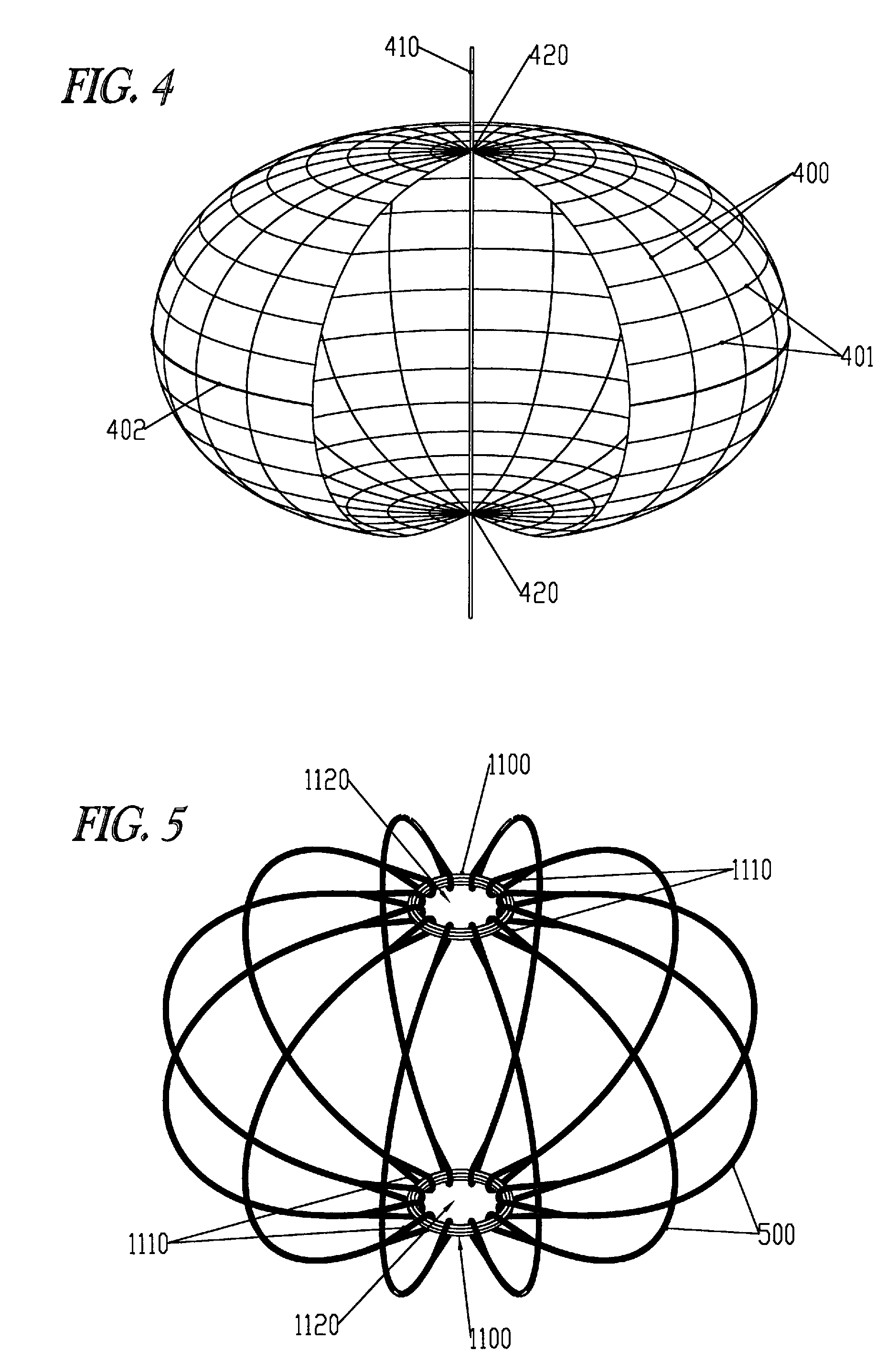Flexible vessel
a flexible, vessel technology, applied in the field of flexible vessels, can solve the problems of inability to precisely balance the load sharing between individual fibers, the potential point load induced source of chain reaction failure of interfaces, joints or seams, and the inability to ultimately bode well, so as to facilitate significant opportunity for vessel modularity and beneficial stress distribution
- Summary
- Abstract
- Description
- Claims
- Application Information
AI Technical Summary
Benefits of technology
Problems solved by technology
Method used
Image
Examples
Embodiment Construction
[0045]In the following detailed description of the example embodiments, reference is made to the accompanying drawings that form a part hereof, and in which are shown by way of illustrating specific example embodiments. The example embodiments illustrated are described in sufficient detail to enable those skilled in the art to practice the teachings disclosed herein. Other example embodiments can be utilized and derived therefrom, such that structural and logical substitutions and changes can be made without departing from the scope of the claims. The following detailed description, therefore, is not to be taken in a limiting sense, and the scope of various embodiments is defined only by the appended claims, along with the full range of equivalents to which such claims are entitled.
[0046]The example embodiments described below are illustrative of the so-called ‘multidisciplinary technology’ common in space architecture where highly complex devices are required to perform with the ut...
PUM
 Login to View More
Login to View More Abstract
Description
Claims
Application Information
 Login to View More
Login to View More - R&D
- Intellectual Property
- Life Sciences
- Materials
- Tech Scout
- Unparalleled Data Quality
- Higher Quality Content
- 60% Fewer Hallucinations
Browse by: Latest US Patents, China's latest patents, Technical Efficacy Thesaurus, Application Domain, Technology Topic, Popular Technical Reports.
© 2025 PatSnap. All rights reserved.Legal|Privacy policy|Modern Slavery Act Transparency Statement|Sitemap|About US| Contact US: help@patsnap.com



